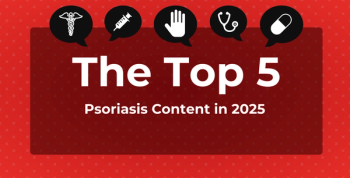
Racial and Ethnic Bias in Pulse Oximetry Is Failing Patients
Acknowledging the disparity in pulse oximetry implicates a $2 billion industry that has faced stricter regulations in recent years in an attempt to address bias in the development and testing of these devices, the authors stated.
Coordinated action among manufacturers, clinicians, regulators, and policymakers is necessary to address the racial and ethnic bias in pulse oximetry, the authors of an article published in
The reliability of pulse oximetry has come under scrutiny due to evidence of
COVID-19 mortality data
While the study didn’t investigate pulse oximetry or link it to these deaths, the current article highlighted that oximetry readers have been implicated in worsening health disparities due to their inefficiency.1 Acknowledging this disparity implicates a $2 billion industry that has faced stricter regulations in recent years in an attempt to address bias in the development and testing of these devices.
“Despite the problem of racial and ethnic bias being known for decades, global use of pulse oximetry continues to increase, and it is incorporated into risk scores, triage algorithms, and artificial intelligence,” the authors wrote.
Clinical studies have consistently shown that pulse oximeters often overestimate oxygen levels in individuals with darker skin tones. This discrepancy is compounded by greater variability in readings for these patients compared with those with lighter skin tones, making the devices less precise. The combined effect can delay the recognition of critical hypoxemia, compromising timely medical intervention.
Efforts to engineer more equitable pulse oximeters have resulted in promising prototypes. However, the article cited the challenges to widespread adoption are deeply rooted in market dynamics, clinical practices, legal frameworks, and regulatory oversight.
Challenges Across Sectors
Manufacturers: Resistance and Market Dynamics
Manufacturers of pulse oximeters often claim their devices are tested on diverse populations, yet independent studies and clinical observations contradict these assertions. Acknowledging bias would not only expose manufacturers to potential legal liabilities but also damage their market reputation. Furthermore, the dominance of the US market by a few large manufacturers limits opportunities for innovative startups to introduce improved devices.
Clinicians: Limited and Risky Alternatives
In practice, clinicians have few effective strategies to mitigate device bias. Suggested adjustments, such as modifying care protocols based on race or ethnicity, are fraught with ethical and practical issues. These approaches risk perpetuating disparities and often require invasive procedures like arterial punctures to verify oxygen levels. These interventions place additional burdens on patients without addressing the root cause of the problem.
Legal Barriers to Accountability
Legal remedies for addressing biased devices are limited. Patients must demonstrate that harm occurred and that alternative, unbiased devices were available—an unlikely scenario given the current market. Lawsuits have achieved some success in raising awareness; for instance, Medtronic settled a case by agreeing to educate clinicians about the limitations of its devices. However, such measures stop short of solving the underlying issue.
Regulatory Challenges: FDA and Beyond
The FDA’s existing clearance process for pulse oximeters does not require clinical testing, allowing manufacturers to bypass real-world performance evaluation. While the FDA has proposed new guidance to address racial and ethnic bias, these updates would apply only to future devices, leaving existing flawed models in widespread use. Moreover, the proposed guidance does not mandate testing under clinical conditions, undermining its potential impact.
Pathways to Equitable Solutions
The authors outlined potential strategies that could drive meaningful change:
- Federal Incentives for Innovation: The federal government could leverage its purchasing power to incentivize the development of equitable pulse oximeters through advanced market commitments. This approach, which was used successfully during the COVID-19 vaccine rollout, could accelerate the availability of unbiased devices.
- Reimbursement Reforms: Adjusting reimbursement models to favor the use of equitable devices could encourage their adoption. Higher payments for procedures that rely on proven equitable technology would align financial incentives with improved patient outcomes.
- Enhanced Regulatory Standards: Organizations like the Joint Commission could classify the use of biased pulse oximeters as a safety violation, compelling health care providers to adopt improved devices. Additionally, regulators should establish clear, standardized methods to evaluate bias in medical devices, prioritizing funding for large-scale clinical trials to validate new technologies.
Racial and ethnic bias in pulse oximetry illustrates the complexities of addressing health inequities in technology. By combining market incentives, legal accountability, and strong regulatory frameworks, the article stated that the medical community can ensure that pulse oximeters provide equitable care for all patients.
Although achieving this goal will require considerable initial investment and collaboration, the long-term benefits of equitable health care technology far outweigh the costs. Addressing this issue is both a technical challenge and a moral imperative that demands innovation and a shared vision for a more just health care system, the authors concluded.
References
1. Shachar C, Drabo EF, Iwashyna TJ, Ferryman K. Addressing racial and ethnic bias in pulse oximeters—a wicked problem. JAMA. Published online December 30, 2024. doi:10.1001/jama.2024.25443
2. Shaw M. COVID-19 exacerbated racial and ethnic mortality disparities. AJMC. October 14, 2024. Accessed January 3, 2025.
Newsletter
Stay ahead of policy, cost, and value—subscribe to AJMC for expert insights at the intersection of clinical care and health economics.








































